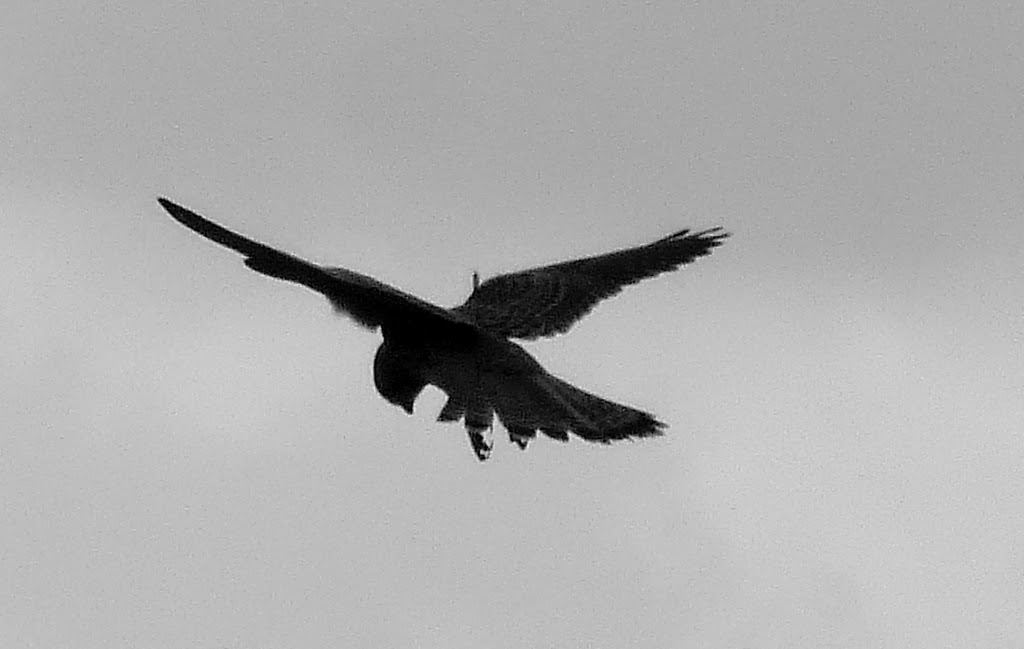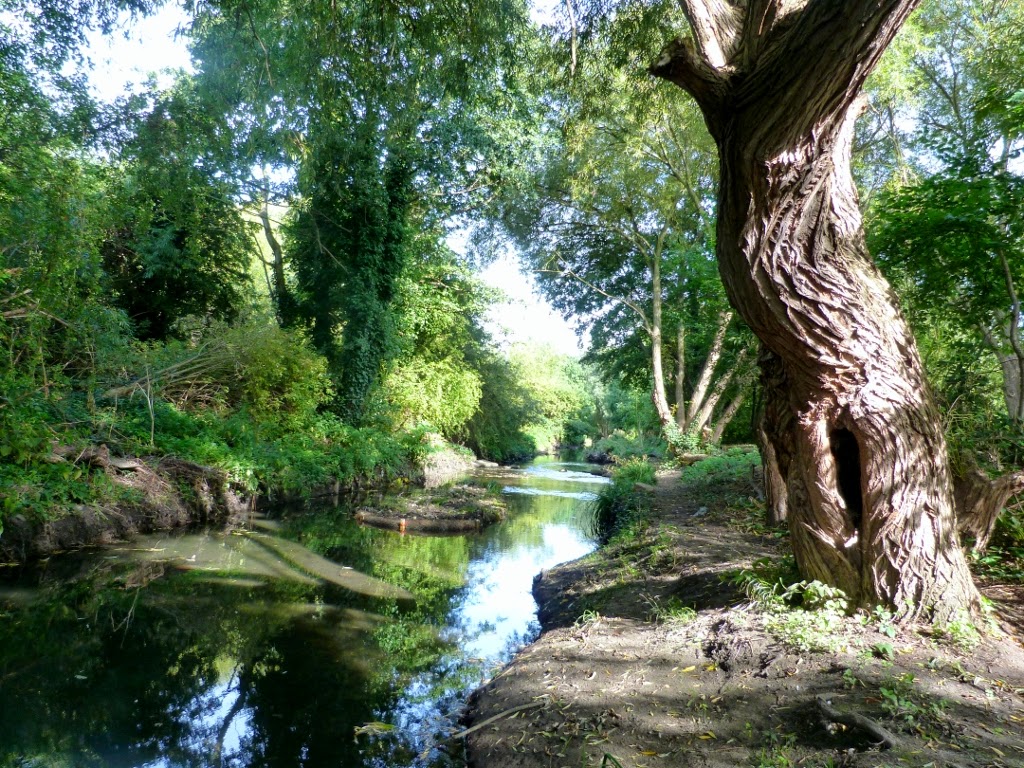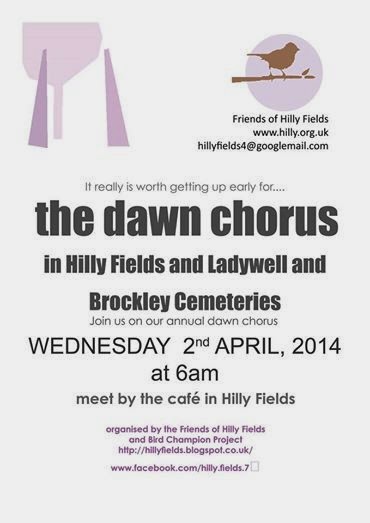Due to various commitments and crises, Sue and I ended up doing the July bird survey at 4.15 pm on 31 July. Afternoons are not normally the best time for bird watching and we had low expectations about what we'd find. And when we began our circuit around the park, our fears seemed to be borne out. The Vicars Hill and Veda Road borders were virtually silent. We spotted a Magpie and heard the faint churr of a Blue Tit from somewhere, but things were not looking or sounding good. In the little wood, we saw a Robin and heard a Parakeet. On the upper part of Eastern Road, we heard a Greenfinch and saw a small flock of about 5 Goldfinches.
.jpg)
Then, from the brow of the hill between Eastern Road and the school, Sue spotted a predator flapping away eastward, a dark shape difficult to identify in the few seconds that it was visible. A Sparrowhawk? Maybe. We carried on, feeling a little frustrated...but not for long. As we approached the slope above the wildflower meadow, Sue spotted the bird landing on one of the lime trees that border Adelaide Avenue. Soon after, it began an aerial tour of the south slopes and our predator became identifiable. A Kestrel! A female, in fact, and the first one that we'd seen at Hilly Fields since February 2012.

For the next forty minutes, we watched as it circled around, sometimes hovering with rapid wingbeats in that distinctive way Kestrels have, at other times gliding with wings outstretched. At one point, it perched on a tree for a short while and I was able to get some decent pics through the zoom lens. The focus of its attention was the long grass in the south meadow where it would have been looking for field mice and voles. Several times, it swooped down into the grass, but didn't appear to catch anything other than maybe a few invertebrates. A Crow and a Magpie arrived to hassle it at different times, but it simply flew higher and carried on. After about forty minutes, it disappeared over the school heading eastward again. As far as I know, it hasn't returned.

The Kestrel population across the UK has been declining in recent years, though there is some evidence that the decline is recovering a little. It was great therefore to see it at our park again and shows that meadow areas have value for other species as well as invertebrates and wild flowers. To distinguish between male and female Kestrels, you need binoculars or very good eyesight. The male has a grey head and markings like little black diamonds on its brown back. The female has a brown head and black barring across its back. Seen together, the female is a little larger and a slightly darker brown. Both have streaked breasts and their wings taper to a point.

After that, it was back to the common or garden birds. 8 Feral Pigeons, 6 Woodpigeons, 3 House Sparrows, a Blackbird, a Great Tit and a Swift added to the other birds seen made a total of 14 species which is low but comparable with previous years. The breeding season is more or less over now and many birds are resting or moulting. The Swift would have been gearing up for its return flight to Africa and most of its fellows seem to have gone back.
 |
| "Now where's that Kestrel gone? You look that way and I'll look this..." |
Finally, I'm reminded that our original bird champion Keith saw a Kestrel (female, again) six years ago which did catch some prey in the meadow (as recorded
here) and which conveniently posed for the camera though without looking too pleased!



.jpg)






.jpg)
.jpg)
.jpg)

.jpg)
.jpg)
.jpg)